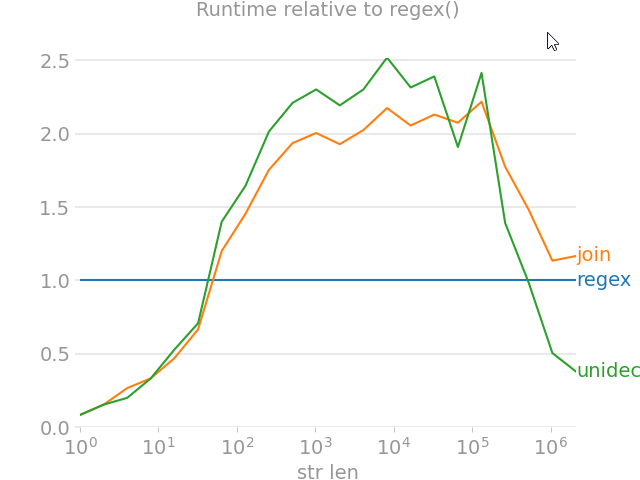Here is a short function which strips the diacritics, but keeps the non-latin characters. Most cases (e.g., "à" -> "a") are handled by unicodedata (standard library), but several (e.g., "æ" -> "ae") rely on the given parallel strings.
Code
from unicodedata import combining, normalize
LATIN = "ä æ ǽ đ ð ƒ ħ ı ł ø ǿ ö œ ß ŧ ü "
ASCII = "ae ae ae d d f h i l o o oe oe ss t ue"
def remove_diacritics(s, outliers=str.maketrans(dict(zip(LATIN.split(), ASCII.split())))):
return "".join(c for c in normalize("NFD", s.lower().translate(outliers)) if not combining(c))
NB. The default argument outliers is evaluated once and not meant to be provided by the caller.
Intended usage
As a key to sort a list of strings in a more “natural” order:
sorted(['cote', 'coteau', "crottez", 'crotté', 'côte', 'côté'], key=remove_diacritics)
Output:
['cote', 'côte', 'côté', 'coteau', 'crotté', 'crottez']
If your strings mix texts and numbers, you may be interested in composing remove_diacritics() with the function string_to_pairs() I give elsewhere.
Tests
To make sure the behavior meets your needs, take a look at the pangrams below:
examples = [
("hello, world", "hello, world"),
("42", "42"),
("你好,世界", "你好,世界"),
(
"Dès Noël, où un zéphyr haï me vêt de glaçons würmiens, je dîne d’exquis rôtis de bœuf au kir, à l’aÿ d’âge mûr, &cætera.",
"des noel, ou un zephyr hai me vet de glacons wuermiens, je dine d’exquis rotis de boeuf au kir, a l’ay d’age mur, &caetera.",
),
(
"Falsches Üben von Xylophonmusik quält jeden größeren Zwerg.",
"falsches ueben von xylophonmusik quaelt jeden groesseren zwerg.",
),
(
"Љубазни фењерџија чађавог лица хоће да ми покаже штос.",
"љубазни фењерџија чађавог лица хоће да ми покаже штос.",
),
(
"Ljubazni fenjerdžija čađavog lica hoće da mi pokaže štos.",
"ljubazni fenjerdzija cadavog lica hoce da mi pokaze stos.",
),
(
"Quizdeltagerne spiste jordbær med fløde, mens cirkusklovnen Walther spillede på xylofon.",
"quizdeltagerne spiste jordbaer med flode, mens cirkusklovnen walther spillede pa xylofon.",
),
(
"Kæmi ný öxi hér ykist þjófum nú bæði víl og ádrepa.",
"kaemi ny oexi her ykist þjofum nu baedi vil og adrepa.",
),
(
"Glāžšķūņa rūķīši dzērumā čiepj Baha koncertflīģeļu vākus.",
"glazskuna rukisi dzeruma ciepj baha koncertfligelu vakus.",
)
]
for (given, expected) in examples:
assert remove_diacritics(given) == expected
Case-preserving variant
LATIN = "ä æ ǽ đ ð ƒ ħ ı ł ø ǿ ö œ ß ŧ ü Ä Æ Ǽ Đ Ð Ƒ Ħ I Ł Ø Ǿ Ö Œ ẞ Ŧ Ü "
ASCII = "ae ae ae d d f h i l o o oe oe ss t ue AE AE AE D D F H I L O O OE OE SS T UE"
def remove_diacritics(s, outliers=str.maketrans(dict(zip(LATIN.split(), ASCII.split())))):
return "".join(c for c in normalize("NFD", s.translate(outliers)) if not combining(c))


unicodedata.name, or break down and use a look-alike table-- which you'd need for Greek letters anyway (Α is just "GREEK CAPITAL LETTER ALPHA"). – Mytilene